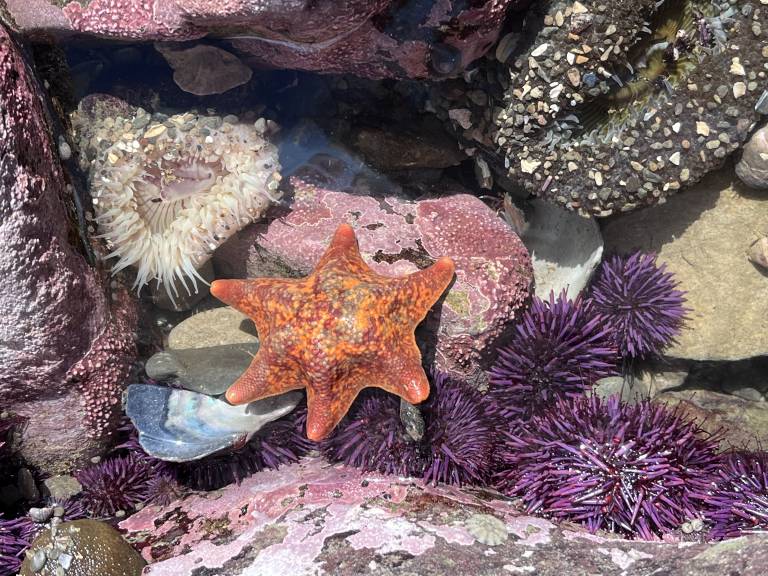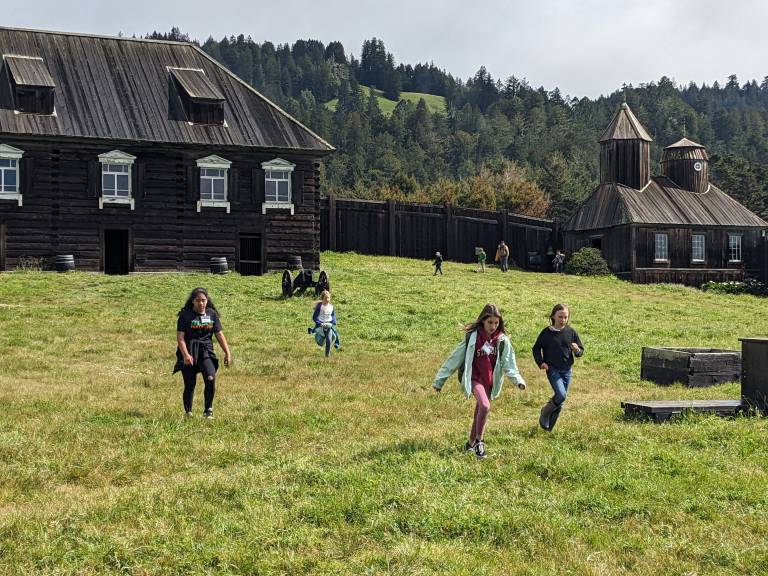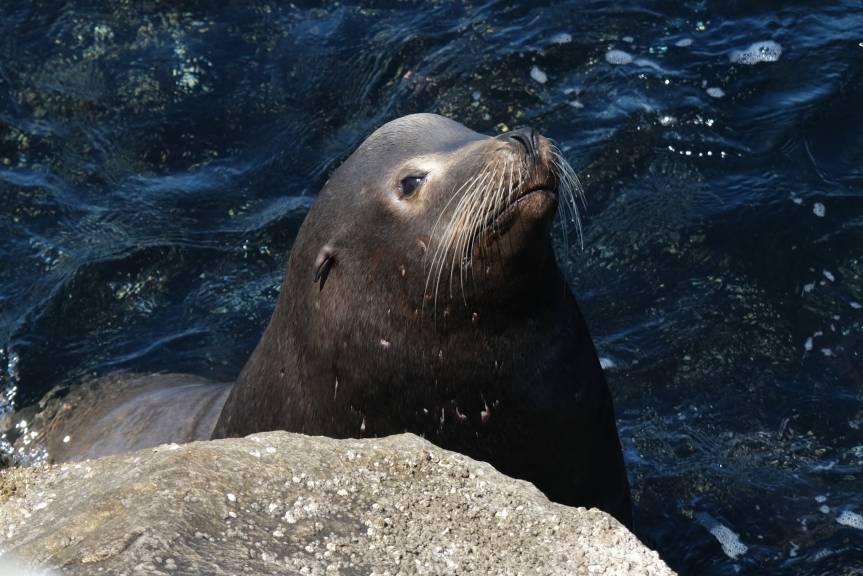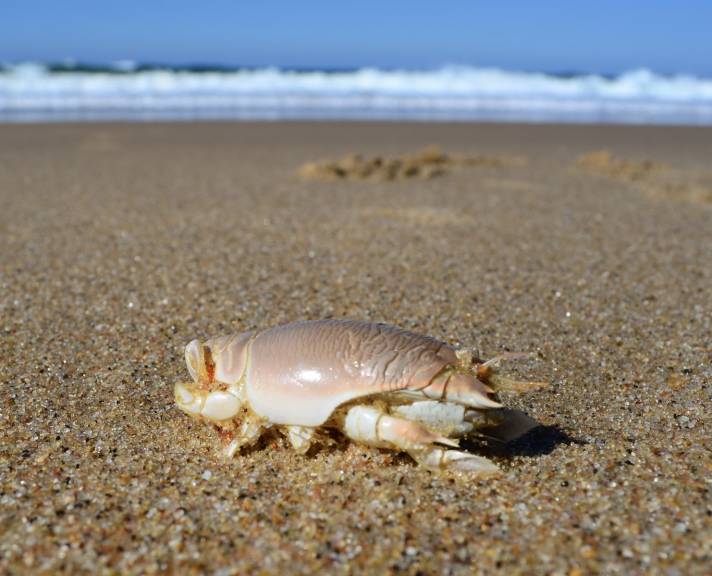MEP Activities
In the MEP you will...
- Be connected with both coastal wildlife, local history, and restoration initiatives.
- Be equipped with binoculars and telescopes
- Observe and learn how to identify coastal species
- Have guided hikes with knowledgeable instructors along the stunning Sonoma Coast and tour the historic buildings
- Understand how the coast we see and experience today has been shaped by human activities over the last 250 years
- Optional: Keep a field journal to record data, thoughts, and sketches,
 The MEP is for school students, youth groups, adults, with team building and collaborative learning activities. By exploring the effects of human impacts on the local environment, our activities are designed to inspire conservation and tackle the urgent environmental issues affecting our coastline. During the MEP, we teach ocean stewardship and sustainable resource management through the long lens of history.
The MEP is for school students, youth groups, adults, with team building and collaborative learning activities. By exploring the effects of human impacts on the local environment, our activities are designed to inspire conservation and tackle the urgent environmental issues affecting our coastline. During the MEP, we teach ocean stewardship and sustainable resource management through the long lens of history.
Kelp Forest Activities
Helping Kelp!
Kelp forests in California have declined by more than 90% since 2014 due to a population increase in purple sea urchins. These classes cover the key aspects of kelp forest loss and how they are being restored by scientists today. The decline has been caused by over-exploitation of sea otters in the 1800s, the sea star wasting disease in 2013, and a marine heatwave in 2014-2016.
Learn about the importance of kelp for both people and marine life, the factors that lead to their catastrophic loss, and restoration efforts currently underway to try to help bring them back. Handle, measure, and even dissect* purple sea urchins collected locally by kelp restoration scientists.
*Dissection classes are depentent on student age and urchin availability
Tidepooling: The Rocky Intertidal Zone
Find sea stars, anemones, abalone, crabs and so much more. Tidepooling is a treasure hunt to find cryptic, conspicuous and stunningly beautiful intertidal organisms. The intertidal in California is incredibly biodiverse. It is home to a huge array of marine invertebrates, fish and different types of algae. See the population explosion of purple sea urchins that contributed to kelp loss!
An indoor presentation on species identification is a great addition to this activity before heading out into the field. Tidepooling is suitable for all ages and learning can be advanced for middle and high school students with an intertidal survey using quadrats along a transect line.
Sea Otters and the 1800s Fur Trade

Sea otters are one of two key sea urchin predators in NorCal. Overhunting of sea otters has contributed to the decline of kelp forests along the coast. Fort Ross played a key role in sea otter decline as a hunting outpost.
In this activity, we explore the buildings in the Fort and go inside the Fur Warehouse and Trade Store where you can feel different furs including sea otter fur and see trade items.
By examining the cultural history of Fort Ross we look at how human practices impact the environment and natural biodiversity. Students see first hand the long-lasting impact of unsustainable hunting and learn about the need to protect and restore the natural environment.
 Marine Mammal Activities
Marine Mammal Activities
Sea Lion Hike
Sea lions are endlessly entertaining. They play, spar, climb and jump off cliffs and are very loud. On the bluffs, we have a great vantage point to see large groups of sea lions in the water and on the islands with binoculars and telescopes, sometimes over 400!
FRSHP is lucky to have resident Steller and California sea lions and Harbor Seals that live in the Park throughout the year. This is one of the best places to see Stellers in California!
Harbor Seals
Harbor seals haul out along the shoreline in FRSHP. They are the opposite to sea lions: shy and quiet. See pups in April and May!
Learn about seal biology and ecology, respecting wildlife, and why marine mammal monitoring is so important for conservation.
Winged Wildlife
Habitat restoration
Learn about the amazing hummingbirds, butterflies, and bees on the coast and the native plants that support them. So far, 171 bird species has been observed at Fort Ross. Help with habitat restoration for endangered butterflies by creating native “seed bombs”!
Staying overnight? Learn about some of the creatured of the night in the State Park! Bats are wonderfully creepy but also very cute and not to mention extremely important! They pollinate crops, disperse seeds, eat insect pests, and are part of the food chain.
Search for Sand Crabs
 Sand crabs are important herbivores in beach ecosystems and are a food source for birds, fish, and even sea otters. Dig in the sand to find sand crabs using equipment provided by FRC! Students can collect data including crab abundance, size, and sex.
Sand crabs are important herbivores in beach ecosystems and are a food source for birds, fish, and even sea otters. Dig in the sand to find sand crabs using equipment provided by FRC! Students can collect data including crab abundance, size, and sex.
Optional: This activitiy can be done as part of LiMPETS Sandy Beach Monitoring curricula for students in grades 6-12 and college students. This includes teacher training with LiMPETS, an in-class presentation for students, 2.5-3 h mole crab survey in the field, optional mole crab dissection, data entry and exploration.
Photo source: Micheal Douglas, iNaturalist
Additional Information
Beach time 
Explore, play and relax on the beach. MEPs almost always have the whole beach to themselves. Find shells, play in the sand, build drift wood structures and watch out for river otters, whales, and harbor seals that peak above the surface. This is a great experience if you don't have the opportunity to visit the beach very often.
Photos: Dr. Dione Deaker, Coastal Naturalist
Student Feedback
2024
"The program was really fun and I would want to do it again. I also loved the enthusiasm that [the] MEP [instructors] had about explaining facts about sea urchins and sea lions/ seals."
"I thought it was really amazing and I loved the Sea lions, touching the urchins, and seeing many amazing historical buildings in Fort Ross. I learned about how the sea urchins are overpopulating, and eating all the kelp. I hope the ecosystem comes back because I love Sea Otters. The second thing I learned is that the Sea lions did not do what I thought because I've known that sea lions swim a lot but this time I saw them relaxing and chilling [on the islands], which I though was very cool."
"I enjoyed the Marine Ecology program very much. The people there were very nice and I just had a great time overall. The buildings there were super cool and awesome to explore. I also enjoyed when we got to touch and research the sea urchins."
"It was amazing. The sights were cool, the animals were fun, and the whole program seemed well thought out and it was very well done. I learned that Sea otters were hunted out of the area, and that Sea urchins took over the kelp forest. My favorite activity was when we used the binoculars to see the Sea lions and Seals."